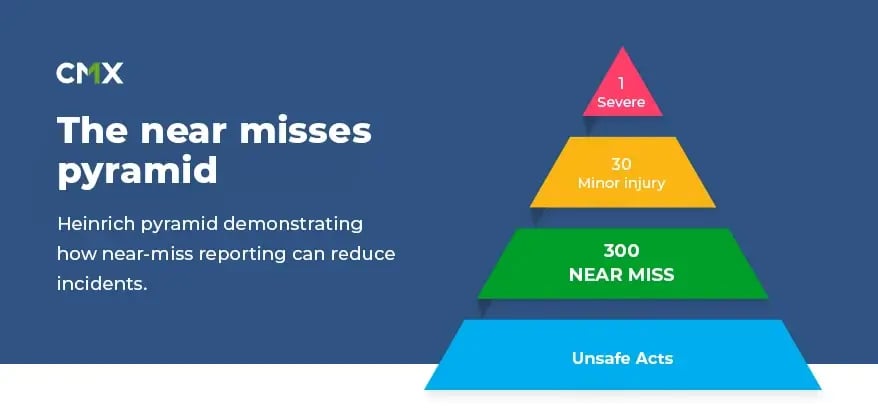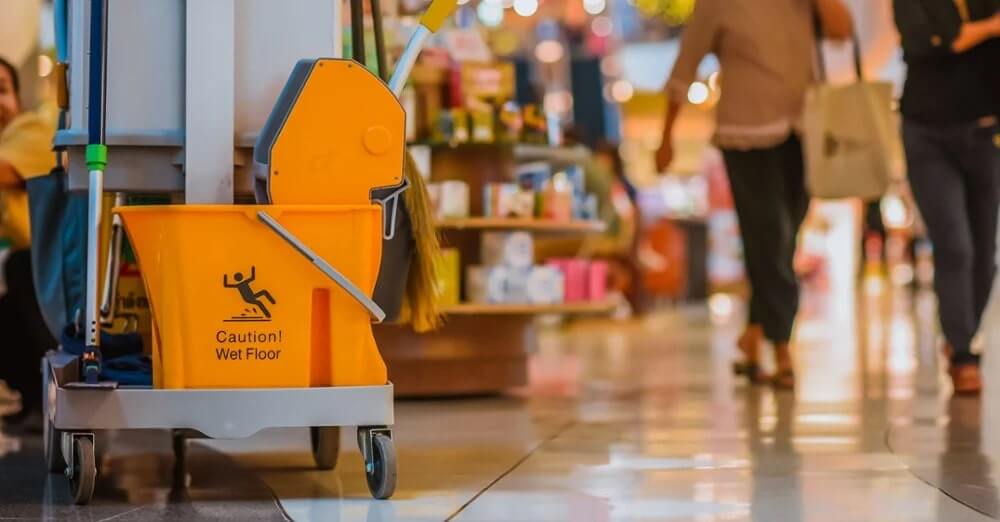Grocers, retailers, restaurants, hotels and resorts are generally lively places with employees, customers, vendors, and delivery personnel on the premises at any given time. These dynamic and busy environments are filled with potential workplace hazards and risks that can endanger people’s health and safety. To reduce the likelihood of serious workplace accidents, it is recommended that businesses actively assess near miss events as an integral part of operational risk management and efforts toward continuous improvement.
Often near misses can look like a non-event, other times they might be remarkably close calls. Either way, they should be reported and analyzed. But if assessing and reporting workplace incidents is currently being done manually, then implementing a digital system can bring many benefits like:
- Accurate and centralized data for analysis and insights
- Reduce the risk of future incidents
- Reduce time lost due to near misses or actual incidents
- Reduce the risk of human injury or illness
- Automated record keeping
- Protect your brand reputation
- Improve your profits and the bottom line
The purpose of reporting near misses isn’t about casting blame. It’s about creating a culture of continuous improvement and preventing actual events in the future. By doing so, you can better protect your staff, customers, partners, and your bottom line.
What is a near miss and why are they important to document?
A near miss refers to an incident that could have resulted in an injury or illness to people, a danger to health, or damage to property.
And while a ‘narrow escape’ might make for fun stories to share with colleagues, they are not to be taken lightly. If there is potential for things to go wrong, then the behavior and related incidents must be reported.
The crucial element here is that while there may have been no injury or impact this time, there could have been, and therefore the incident must be assessed to help reduce the risk of it occurring again as an actual incident.
An important distinction must be made between near miss and incident—if the event led to property damage or bodily harm, it’s now an incident and must be reported as such.
It’s common practice for businesses to refer to the Accident Triangle theory when planning their near miss reporting strategies.
First coined in the 1930s by Herbert Heinrich—and often referred to as the “safety triangle”—the theory shows that often times the same things that cause near misses, also cause incidents. Heinrich’s theory shows that severe injuries often occur after many less severe injuries and near misses and that these events occur in a fixed ratio of 300 near misses to 29 less severe injuries to one major injury.

How near miss incidents can happen
Some examples include:
- Physical hazards - Wet floors, dark rooms, and uneven steps are all classic examples of physical hazards where something could go wrong.
- Incorrect or inappropriate signage – If hazards are not effectively communicated such as a wet floor or temporary storage of harmful substances, this could become a hazard that leads to an incident.
- Human error - Ensuring people are trained and matched appropriately to the tasks is crucial, likewise making sure workers do not work while tired, or under the influence of alcohol or drugs.
There are several governing bodies such as the National Safety Council, OSHA, and the US Department of Labour who all offer a wide range of resources to help with near miss reporting standards.
Benefits of automating your near miss incident reporting
Heinrich’s ‘Accident Triangle’ tells us that repetitive near misses eventually become incidents. However, reporting near misses isn’t as useful if you don’t have the systems or tools to centralize the data for analysis. Ultimately, you need to implement corrective actions to drive improvement—which is why CMX1’s Incident Management reporting system is not only beneficial in terms of the streamlined reporting of incidents and near misses, but it also helps to identify opportunities to address risks and drive proactive improvements across your organization.
Save time and improve the quality of your data
If you’re still working with a manual system to document incidents and near misses, it’s likely you’re investing countless hours of human capital into work that can be done faster and more efficiently with an automated system. It also greatly improves the quality of your data for gaining insights.
Automation and “Intelligent Forms” (digital forms with conditional questions and data validation) enable you to better manage the workflow associated with reporting by improving the accuracy of data collected, the categorization of incidents, and completeness of information.
Quickly adapt through real-time reporting
With better data, comes better reporting. By electronically capturing and centralizing data, real-time reporting becomes possible. Which can enable your business to more quickly adjust policies or take corrective action to prevent future near misses from turning into more serious incidents. Analysis of trends can also make it possible to make better decisions, and make processes safer and more cost-effective.
A complete picture of quality, risk, safety, and compliance
In addition to automation and reporting, there is also considerable value in aggregating your incident data with the other operational information CMX1 can manage about your locations, including:
- View the results of all your internal and external audits, self-assessments, and checklists in one place
- See risk and compliance of a particular location, district, market, or region—at a point in time or over a time frame
- Generate more comprehensive reporting for location performance and comparison to other locations
- Analyze results and adjust policies and standard operating procedures
- Provide visibility to your stakeholders with a big-picture view of what’s happening across all locations
Flexibly manage both global and regional brands
CMX1 supports brands of all sizes and we’re always happy to talk through our customer success stories and show how brands like Buffalo Wild Wings and Checkers & Rally's are leveraging CMX1 to achieve and maintain operational excellence and drive performance across their national and global locations.
Ready to improve your near miss incident reporting?
Then get in touch and talk to one of our team here at CMX1. You can also visit our solution pages to learn about the X1 platform and how it helps companies of all sizes to gain control and transparency over their supply chains, deliver quality products and services, and ensure compliance and drive performance across their locations.




